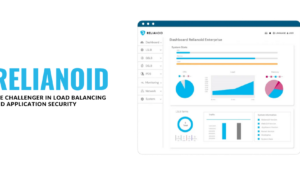In an era dominated by technological advancements and digital transformation, businesses are heavily reliant on applications to streamline operations, enhance productivity, and connect with their customers. However, as the digital landscape expands, so does the threat landscape. Cybersecurity has become a critical concern for organizations worldwide, and mobile application security stands at the forefront of this battle. This article explores the profound significance of application security in modern business operations, delving into the potential risks, the evolving threat landscape, and the strategies businesses must adopt to safeguard their applications.
The Growing Dependence on Applications
Applications have become the lifeblood of contemporary business operations. From customer relationship management (CRM) systems to enterprise resource planning (ERP) platforms, organizations utilize a myriad of applications to manage various facets of their operations. These applications often handle vast amount of data, including customer information, financial records, and proprietary business processes. The increasing dependence on applications, coupled with the rising sophistication of cyber threats, underscores the importance of robust application security measures.
Understanding the Risks
Before delving into the significance of application security, it is essential to comprehend the risks associated with inadequate protection. Cyber threats have evolved beyond simple viruses and malware to sophisticated attacks, such as ransomware, phishing, and zero-day exploits. Applications, being an entry point for many cybercriminals, are vulnerable to a range of attacks that can result in data breaches, financial losses, and damage to an organization’s reputation.
Data breaches, in particular, can have severe consequences. The compromise of sensitive customer data not only violates privacy but can also lead to legal repercussions and financial penalties. Moreover, the loss of intellectual property through a breach can jeopardize a company’s competitive advantage and innovation.
The Evolving Threat Landscape
The threat landscape is dynamic, with cybercriminals continually adapting their tactics to exploit vulnerabilities. As applications become more complex, interconnected, and accessible, the attack surface expands, providing more opportunities for malicious actors. From SQL injection and cross-site scripting to supply chain attacks, the methods employed by cybercriminals are diverse and ever-evolving.
One notable trend is the targeting of third-party applications and services. Many organizations integrate third-party software into their systems to enhance functionality and efficiency. However, this practice introduces additional security risks, as vulnerabilities in third-party applications can be exploited to compromise the entire system. Thus, businesses must not only secure their in-house applications but also rigorously assess the security posture of the third-party solutions they integrate into their ecosystems.
Business Continuity and Resilience
Application security is not only about preventing unauthorized access or data breaches but also about ensuring business continuity and resilience. Downtime caused by a security incident can have severe financial implications, affecting revenue, customer trust, and overall business operations. A robust application security strategy includes measures to mitigate the impact of potential security incidents, enabling organizations to recover quickly and continue operations without significant disruptions.
Regulatory Compliance
The regulatory landscape surrounding data protection and cybersecurity is continually evolving. Governments and industry regulators worldwide are imposing stricter regulations to ensure the responsible handling of sensitive information. Non-compliance not only results in legal consequences but can also tarnish a company’s reputation.
Application security plays a pivotal role in regulatory compliance. By implementing security measures that protect sensitive data, organizations can demonstrate their commitment to adhering to regulatory requirements. This not only mitigates legal risks but also builds trust among customers and stakeholders.
Customer Trust and Brand Reputation
In an age where information spreads rapidly through digital channels, maintaining customer trust is paramount. A single data breach or security incident can erode the trust that customers place in a business. Consumers are increasingly discerning about the security practices of the companies they engage with, and a robust application security framework is a key element in establishing and preserving trust.
Brand reputation, once tarnished by a security incident, is challenging to restore. Customers may choose to disengage with a company that fails to protect their data, resulting in lost business and a damaged brand image. Therefore, investing in application security is an investment in safeguarding the reputation and trust that a business has worked hard to build.
The Role of DevSecOps in Application Security
In the past security was treated as an afterthought in the software development lifecycle. However, the shift left philosophy, embodied by the DevSecOps (Development, Security, Operations) approach, emphasizes integrating security measures throughout the entire development process.
DevSecOps acknowledges that security is not a one-time activity but an ongoing process that should be ingrained in every stage of application development and deployment. This proactive approach ensures that security considerations are addressed from the initial design phase through to deployment and maintenance.
Implementing DevSecOps practices involves collaboration between development, security, and operations teams. Automation tools play a crucial role in this integration, enabling continuous monitoring, testing, and deployment of secure code. By embedding security into the development process, organizations can identify and address vulnerabilities early, reducing the likelihood of security incidents in production.
Best Practices for Application Security
To establish a robust application security posture, organizations should adopt a holistic approach that encompasses various best practices:
- Regular Security Audits and Assessments: Conduct regular security audits and assessments to identify vulnerabilities and weaknesses in applications and infrastructure.
- Code Reviews and Static Analysis: Implement code reviews and static code analysis to identify and rectify security issues in the early stages of development.
- Dynamic Application Security Testing (DAST): Perform dynamic testing of applications in runtime to identify and address vulnerabilities that may arise during execution.
- Penetration Testing: Conduct penetration testing to simulate real-world attacks and identify potential weaknesses in the application’s defenses.
- Security Training and Awareness: Provide ongoing security training and awareness programs for developers, ensuring that they are equipped to write secure code and understand the latest threats.
- Patch Management: Keep applications and systems up-to-date with the latest security patches to address known vulnerabilities promptly.
- Incident Response Planning: Develop and regularly update an incident response plan to ensure a swift and coordinated response in the event of a security incident.
- Encryption and Access Controls: Implement robust encryption mechanisms and access controls to safeguard sensitive data from unauthorized access.
- Secure Third-Party Integrations: Thoroughly vet and assess the security practices of third-party applications and services before integrating them into the organizational ecosystem.
- Continuous Monitoring and Threat Intelligence: Employ continuous monitoring and leverage threat intelligence to stay informed about emerging threats and vulnerabilities.
Conclusion
In conclusion, the significance of application security in modern business operations cannot be overstated. As organizations increasingly rely on applications to drive their processes and interactions, the need for robust security measures becomes imperative. The risks associated with inadequate application security are multifaceted, encompassing financial losses, legal consequences, damage to reputation, and erosion of customer trust.
A proactive and integrated approach to application security, such as DevSecOps, is essential to address the dynamic and evolving threat landscape. By embedding security into the software development lifecycle and adopting best practices, organizations can fortify their applications against potential threats, thereby ensuring business continuity, regulatory compliance, and the preservation of customer trust and brand reputation.
As we continue to navigate the digital age, the effectiveness of application security will be a defining factor in the success and resilience of businesses in an increasingly interconnected and threat-prone environment.



































